Picture this: You’re listening to your favorite downtempo indie track, and out of nowhere on your screen, the ad slows down — its colors fade, the visuals transition to a muted gradient, and the tagline matches your exact frequency with a soothing hum. Fast forward 10 minutes to when your playlist selects a lively summer song and that same brand ad turns into something completely different — bright colors, playful motion, and typography bouncing to the music. Welcome to mood marketing. Not only does a campaign talk to you, it listens to you.
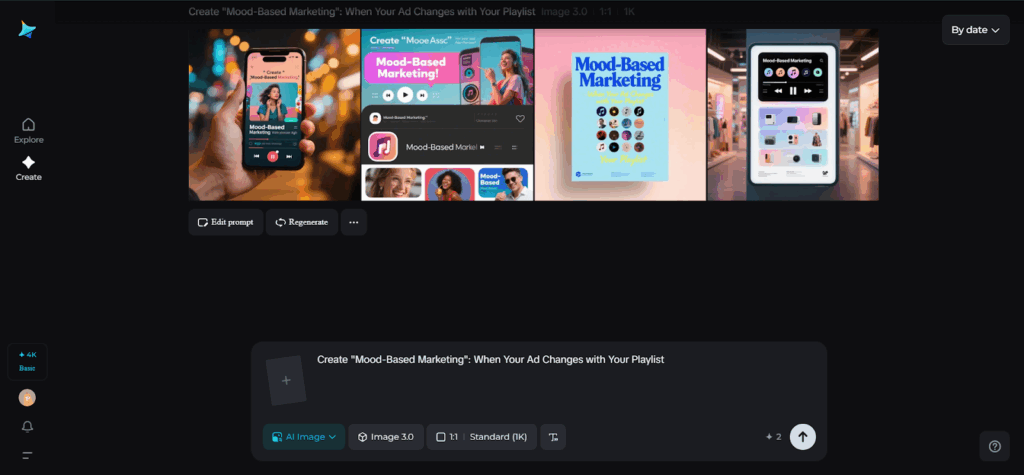
Here in this new era of adaptive ads, images breathe, audio responds, and typography becomes intimate. Brands are no longer static billboards; they’re live performers that evolve based on your mood, your rhythm, and even your silence. And with platforms such as Dreamina — a user-friendly platform designed to craft creative imagery through AI — marketers are discovering new means of converting emotion into design.
Whether it’s via an AI photo generator that encapsulates the mood of a song or an energy-adaptive motion visual that changes with movement, campaigns are becoming emotional reflections of their audiences.
The balance of emotion and design
At the center of mood-based marketing is one fact: people relate more deeply to images that reflect how they feel. Old-school ads once sought universal appeal — same design for every eye, same voice for every mood. But today’s audience is in flux. One day, they yearn for quiet nostalgia; the next, they throb with electronic anarchy.
Mood-sync campaigns are in sync in real time, fueled by signals such as:
- Music selection: bringing in playlists and listening patterns to alter color palettes or typography rhythms.
- Time of day: gentle gradients for evening scrolls, vibrant tones for morning drives.
- Emotional analytics: AI software interpreting micro-interactions — scroll rate, facial expressions, or click cadences — to scan the viewer’s emotional topography.
These aren’t only reactive designs — they’re emotionally smart storytellers. The visual world pays attention, and suddenly your Spotify queue is part of a living campaign.
Where brands become mood companions
Adaptive ads aren’t popping up as annoying breaks anymore. They are figuring out how to just tag along with what we do. They skip the yelling part. They go for a quiet nudge when it fits. Take a coffee brand’s online banner for instance. It could soften into warmer shades if you are chilling with a mellow playlist. Or think about a skincare ad that eases into gentler movements. That happens when your scrolling gets a bit slower.
This emotional resonance makes marketing feel like companionship. The closer it gets to our emotions, the truer it feels. It’s not manipulation, it’s empathy in pixels. And with visual creation on AI, brands can create dozens of versions that resonate with emotional states without having to design each of them manually.
It’s design that breathes in unison with the people — a tiny but significant shift from broadcasting to harmonizing.
The creative remix: designing with Dreamina
Dreamina has been a creative partner in this transformation — converting feeling-based ideas into evocative, emotive visuals. Its intuitive design features allow marketers to convert vibes into images with ease and maximum creativity. From moody settings to music-responsive posters, it’s the affective palette of contemporary branding.
Let’s explore how creators use Dreamina’s special process to create mood-inspired campaigns.
Step 1: Write a text prompt
Begin by going to Dreamina and creating a text prompt that reflects the emotional mood you wish your design to convey. It’s like writing a song’s description visually — the colors, textures, and movement that are a part of its rhythm.
You might write, for instance: A dreamlike digital poster that captures the vibe of an evening jazz playlist, with warm neon colors, floating glass notes, and muted reflections that bring calmness and depth.
Dreamina turns this prompt into a mood-based image — the type that looks like music in visual form.
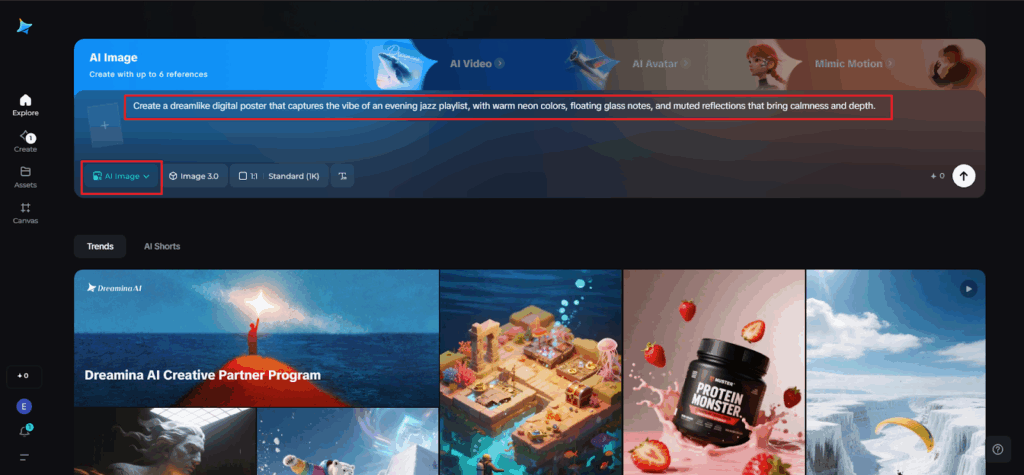
Step 2: Refine parameters and generate
Then, refine the creative output by changing other parameters such as model, aspect ratio, size, and resolution (1k or 2k) so it fits your campaign — from social banners to full-screen. Once you have the settings for the emotion you are targeting, click on Dreamina’s icon to pull an image. Very soon, the AI generates your emotion-driven direction into an image that looks to be painted by rhythm itself.
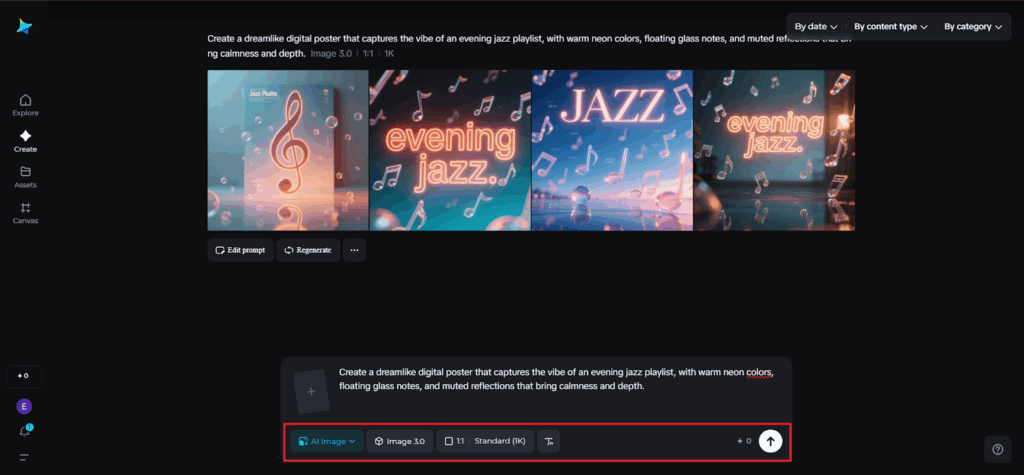
Step 3: Edit and download
When your visual is complete, utilize Dreamina’s AI customization features — inpaint, expand, remove, and retouch — to enhance your mood-based design. Perhaps you need to reduce highlights for a laid-back playlist or introduce kinetic motion lines for something faster-paced. Once you’ve perfected it, tap on the Download icon to save your final piece of art and smoothly integrate it into your campaign.
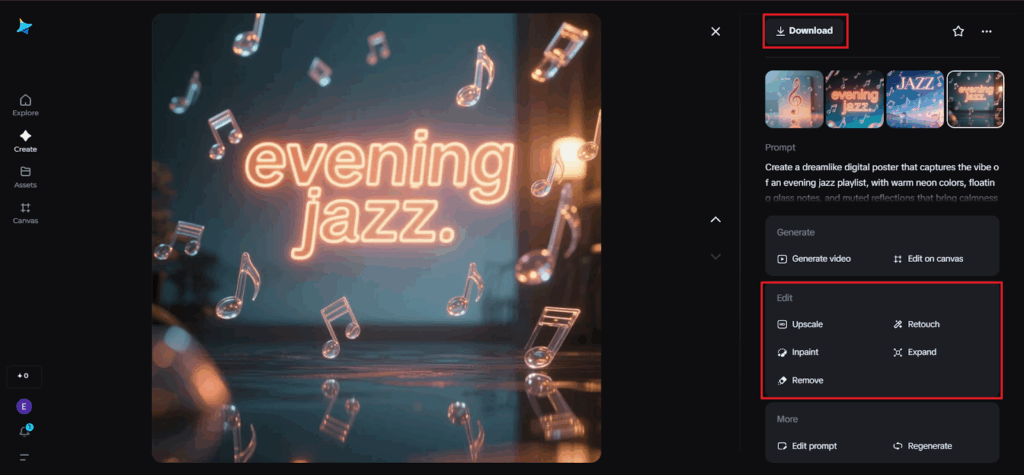
When visuals move with the beat
Mood-based imagery is not only about looks — it’s storytelling in sync. A dynamic design that changes with a playlist does three things that are magical:
- It makes the brand human: Dynamic visuals build empathy — they seem to have a pulse and consciousness.
- It pays back engagement: Each mood unlocks a new appearance or iteration, making advertisements become personal experiences.
- It continues to tell stories: The design doesn’t stop after a single glance; it continues to change as the user continues to do so.
Imagine a drink brand that refreshes its poster according to the user’s Spotify behavior — bubbly and cheerful when pop music is playing, and hazy with silhouettes when blues come on. This micro-personalization instills emotional consistency — a feeling that the brand “understands” without having to tell you.
Where AI design turns into mood design
AI has provided creativity with something it has never had before — flexibility. Rather than pre-made assets, marketers can now create adaptive visuals that interact with emotion, rather than just perform. That’s where tools such as an AI logo generator come into play — allowing brands to transform their visual identity in subtle ways based on context. A brand’s logo can shine brighter during high-energy campaigns or become softer for meditative subjects — remaining consistent, yet emotionally malleable.
This flexibility of design isn’t gimmicks — it’s about aligning the emotional frequency of an audience that no longer desires one-size-fits-all branding.
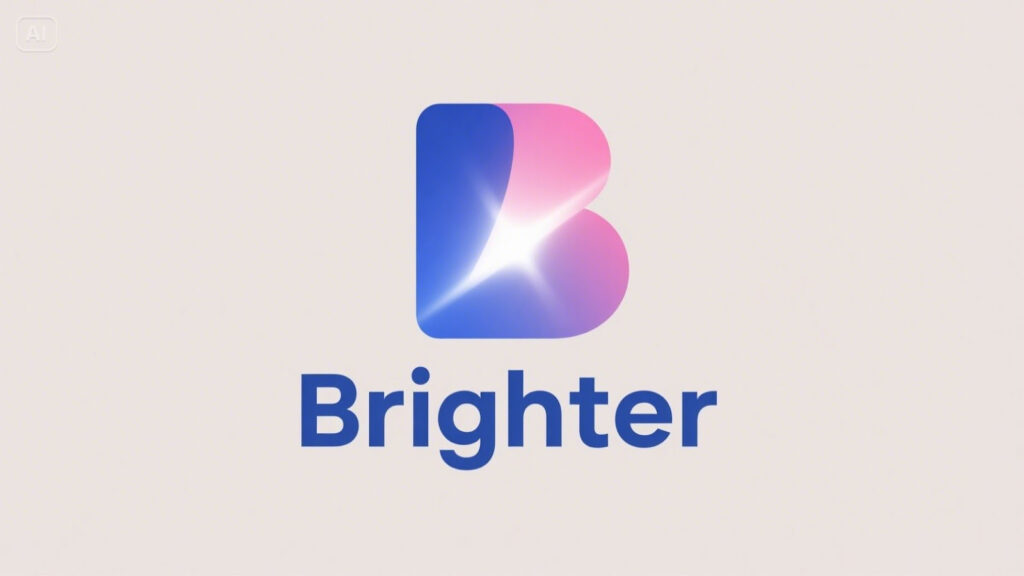
Small bursts of emotional storytelling
Mood marketing also welcomes short-form design storytelling — imagery that changes and shimmers in tiny, significant moments. These gentle hints can consist of:
- Color palettes that react to BPM (beats per minute).
- Typography that beats in sync with music basslines.
- Illustrations that grow when the tempo increases.
When you mix in Dreamina’s AI poster generator, these little facts can shift around in thousands of tiny campaigns. Each one gets tuned to a different emotional vibe. It’s not your usual data-chasing marketing. It actually senses things, you know.
Conclusion: The spot where emotion runs into imagination
Pretty soon, ads aren’t just gonna push products. They’re gonna hit you right in the feels. Mood marketing is clearing the path for this whole new era. Campaigns turn alive, smart in a gut way, and even a kind of understanding. Music and pictures mix into stories that flow smoothly and switch up on the spot in real time.
Dreamina’s right up front in all this shake-up. It turns feelings straight into designs, with that sharp touch, a bit of fun, and real spark. Doesn’t matter if you’re matching your brand to some playlist or whipping up digital art that grows along with your fans. Dreamina helps turn those beats into something that really sticks.
Cause in this fresh wave of creative stuff, the best marketing isn’t blasting out to everybody. It’s all about the vibe.
